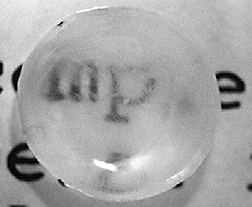This page has been archived and is being provided for reference purposes only. The page is no longer being updated, and therefore, links on the page may be invalid.
|
Read the magazine story to find out more. |
|
|
Removing Damaged Proteins that Cloud Vision
By Rosalie Marion BlissAugust 2, 2005
Consuming a diet rich in antioxidants found in fruits and vegetables could help stave off the breakdown of an important mechanism through which eye lenses are cleared of damaged proteins, according to research funded by the Agricultural Research Service. Efficient removal or repair of damaged proteins within eye lenses is crucial to continued lens transparency.
ARS-funded biochemists Allen Taylor and Fu Shang and their colleagues were the first to observe the mechanism, called the ubiquitin-proteasome pathway, in cells within the eye's lens, retina and cornea. They reported the findings in several peer-reviewed scientific journals.
Taylor is director of the Laboratory for Nutrition and Vision Research, where he conducted the studies with Shang, at the Jean Mayer USDA Human Nutrition Research Center on Aging (HNRCA) at Tufts University in Boston, Mass.
When eye lenses accumulate too many damaged proteins, the resulting areas that become cloudy or opaque are called cataracts. Although a successful procedure for removing cataracts is available, cataract remains the leading cause of blindness worldwide.
The ubiquitin-proteasome pathway helps balance a healthy concentration of proteins within cells. Ubiquitin is an omnipresent protein that identifies damaged proteins that are ripe for removal and attaches itself to them. These "conjugated" proteins then latch onto proteasomes, or protein-degrading enzymes, that in turn complete their function of clearing the molecular trash.
But highly active molecules, called free radicals, that damage cells actually attack ubiquitin and other healthy proteins in the eye. Since a healthy ubiquitin-proteasome pathway could be damaged by severe oxidative stress, antioxidants, such as vitamins C and E, and antioxidant enzymes, such as superoxide dismutase and catalase, may play an important role in protecting the pathway.
Taylor and Shang are now examining ways in which antioxidant nutrients might keep the pathway active longer.
Read more about this research in the August 2005 issue of Agricultural Research magazine.

